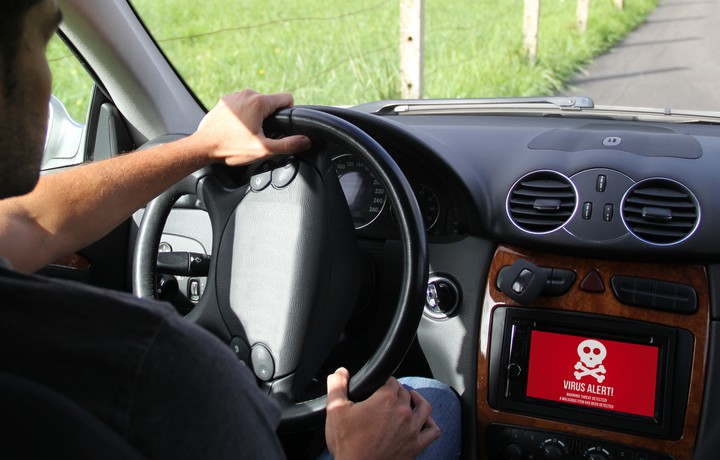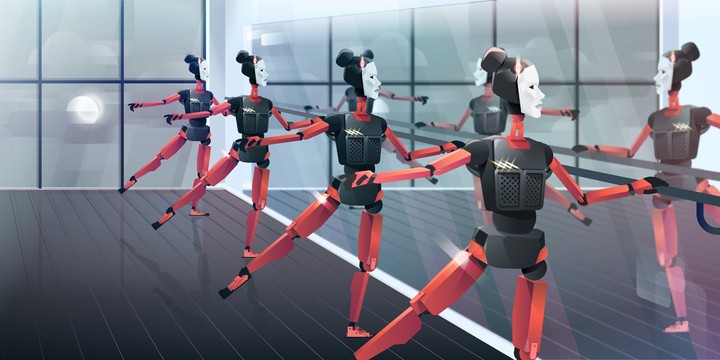Researchers Hack Car Infotainment System and Find Sensitive User Data Inside
Contacts, call logs, text messages and other information from paired phones was stored unencrypted.
Nov 17 2017, 12:42am

Image: Shutterstock
People who are worried about their security will use a secure phone, lock down their computer, and use strong passwords for their online accounts. But how many people have considered that their car could be leaking their most sensitive data?
A researcher who recently decided to investigate his car’s infotainment system found that it was not designed using modern software security principles, yet it stored a lot of personal information taken from his phone that could be valuable to hackers.
Advertisement
Executing code on the car’s infotainment unit was extremely easy by connecting a USB flash drive with specially crafted scripts. The system automatically picked up those files and executed them with full administrative privileges.
Car enthusiasts have used the same method in the past to customize their infotainment systems and run non-standard applications on them, but Gabriel Cîrlig, a senior software engineer at security firm Ixia, wanted to understand the security implications of this technique.
What he found was a major privacy issue where call histories, contacts, text messages, email messages, and even directory listings from mobile phones that had been synchronized with the car, were being stored persistently on the infotainment unit in plain text.
Mobile operating systems like Android and iOS go to great lengths to protect such data by restricting which applications have access to it or by allowing users to encrypt their devices. All that security could be undone if people pair their devices over Bluetooth with an infotainment system like the one found in Cîrlig’s car.
Cîrlig and an Ixia colleague Ștefan Tănase decided to go even further and investigate how the car’s infotainment unit could be potentially abused by an attacker or even law enforcement to track users and obtain information about them that they couldn’t otherwise get from their mobile devices.
The researchers presented their findings Friday at the DefCamp security conference in Bucharest, but declined to disclose the car make or model because they're still in the process of reporting the privacy issue they found. However, they mentioned that the car was made by a Japanese manufacturer.
Advertisement
Cîrlig told me that there is a firmware update available that blocks the USB attack vector on his car, but installing it requires going to a dealership. This means that a large number of cars will likely never be patched.
The infotainment system itself is a hacker's paradise and is more powerful than most embedded devices, including home routers. It has a Cortex-A9 CPU with 1GB of RAM, as well as Wi-Fi and GPS. The operating system is based on Linux and has a fully functional Bash command-line shell with all its usual utilities. On top of that, there are various debugging tools, including for the GPS, that the system’s developers did not bother to remove, according to Cirlig.
It looks like technology that was created in a rush without any concern for security engineering, Cîrlig told me. "A production system, at least for a car, should be completely locked down."
He thinks that some of the software design choices were driven by convenience, like the storing of unencrypted user sensitive data indefinitely instead of requesting it again from the phone when the device is in proximity.
In addition to data copied from mobile devices, Cîrlig found other sensitive information on the infotainment unit, such as a list of favorite locations the car has been driven to or from, voice profiles, vehicle status information, and GPS coordinates.
For their presentation, Cîrlig and Tanase showed a proof-of-concept malware program—a Bash script—that when executed via USB, continuously looked for open Wi-Fi hotspots, connected to them and could exfiltrate newly collected data. By combining this malware with location data from the GPS, an attacker could also track the car in real time on a map.
To make things worse, the rogue script is installed as a cron job—a scheduled task on Linux—and is persistent. Even if the infotainment system is reset to factory defaults, cron jobs are not removed, the researchers said.
Hackers could take the attack even further and create a USB worm, where a compromised infotainment system could infect all USB dongles plugged into it and potentially spread the infection to other cars, Cîrlig said. Or the car could be used in a wardriving scenario, trying to automatically exploit Wi-Fi networks and other systems it encounters, he said.
Advertisement
The development of infotainment systems is usually outsourced to third-party electronic component suppliers and not made by the automobile manufacturers themselves. Other researchers have shown in the past that there are ways to jump from the infotainment systems to more critical electronic control units (ECUs)—the specialized embedded computers that control a car’s functions.
The auto industry continues to work using outdated programming principles and very old technology stacks that would be unacceptable today in a modern software development environment; and that needs to change, Cîrlig said. “For someone like myself who has a software development background, that style of coding looks ancient, from the age of the dinosaurs.”



